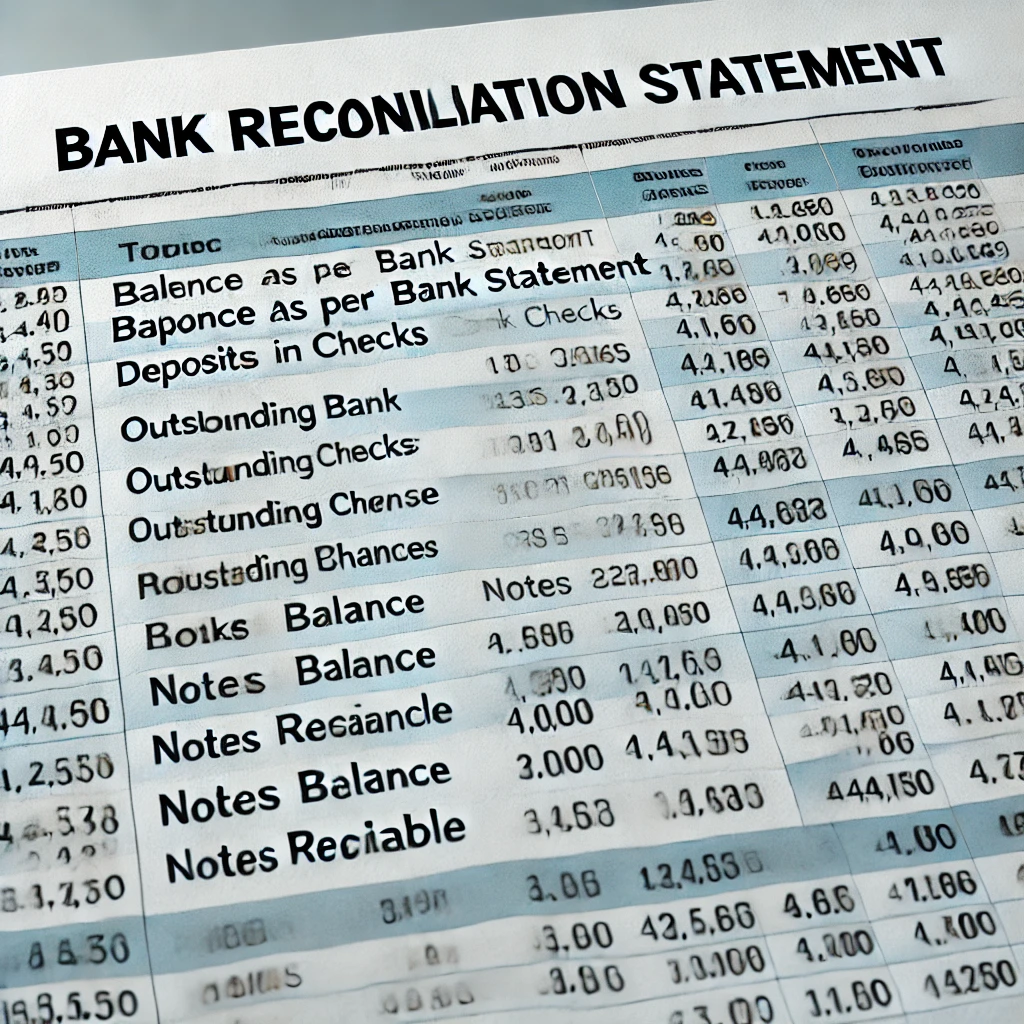A Bank Reconciliation Statement (BRS) is a crucial accounting tool used to match the balance of a company’s cash book with its bank statement or passbook. Discrepancies often arise due to timing differences, errors, or outstanding transactions. Preparing a BRS helps businesses identify these differences, ensuring that their bank account and cash account are accurately aligned. This guide explains the bank reconciliation process, common causes of mismatches, and how to prepare a BRS.
What is a Bank Reconciliation Statement (BRS)?
A bank reconciliation statement is a document that compares the balance in the company’s cash book (which records all cash and bank transactions) with the balance shown in the bank statement (or passbook) issued by the bank. The goal of a BRS is to reconcile the two balances, accounting for timing differences or discrepancies caused by outstanding cheques, uncredited deposits, or errors.
Reasons for Differences Between Cash Book and Passbook
Differences between the cash book and bank statement often occur due to timing issues, errors, or transactions that are not yet recorded by one party. Some common reasons include:
- Deposits in Transit: Deposits made by the business that have not yet been processed by the bank.
- Cheques Outstanding: Cheques issued by the business but not yet cleared by the bank.
- Bank Charges: Fees like service charges or interest debited by the bank that the business hasn’t recorded in the cash book.
- Errors in Recording: Mistakes in entering amounts or recording transactions, either by the business or the bank.
- Direct Deposits or Payments: Money deposited directly into the bank (e.g., customer payments) or payments made by the bank on behalf of the business (e.g., loan EMIs) that are not yet recorded in the cash book.

Steps to Prepare a Bank Reconciliation Statement
To prepare a BRS, follow these key steps:
Step 1: Compare Opening Balances:
Start by comparing the opening balances of the cash book and the bank statement for the period in question.
Step 2: Identify Outstanding Cheques and Deposits:
Check for deposits in transit (deposits not yet processed by the bank) and cheques outstanding (cheques issued but not yet cleared by the bank).
Step 3: Adjust for Bank Charges and Interest:
Add or subtract bank charges, interest, or other fees that appear in the bank statement but not in the cash book.
Step 4: Check for Direct Bank Entries:
Identify any direct deposits or payments made through the bank but not recorded in the cash book.
Step 5: Identify Errors:
Look for recording errors in both the bank statement and cash book. These might include incorrectly entered amounts or missing transactions.
Step 6: Prepare the Reconciliation:
Adjust the cash book balance for any unrecorded transactions and match the reconciled cash book balance with the bank statement balance.
Common Causes of Mismatches in Bank Reconciliation
Timing Differences:
- Cheques issued but not yet cleared: These are cheques that the business has issued, but the bank hasn’t cleared them yet.
- Deposits in transit: These are deposits made by the business but not yet reflected in the bank statement.
Bank Charges and Interest:
- Banks often deduct charges or add interest to the account without the company’s immediate knowledge, creating discrepancies until these items are recorded in the cash book.
Errors in Recording:
- Errors in entering amounts in the cash book or the bank statement can lead to mismatches that must be corrected during reconciliation.
Importance of Bank Reconciliation
- Detecting Errors: The BRS process helps identify errors in both the bank statement and the cash book, ensuring that transactions are accurately recorded.
- Preventing Fraud: Regular reconciliation helps detect unauthorized withdrawals or other fraudulent activity in the bank account.
- Accurate Financial Reporting: Reconciliation ensures that the bank account balance on the financial statements reflects the correct amount, improving the accuracy of the company’s overall financial reporting.
- Cash Flow Management: Regular reconciliation helps businesses manage their cash flow more effectively by providing an accurate view of available funds.
Fun Fact
Did you know that even with advanced accounting software, businesses still perform manual bank reconciliations to double-check the accuracy of automated systems? This ensures that no errors or discrepancies are overlooked.
| Key Points to Remember: 1. A BRS is a comparison of the cash book balance with that of the bank statement. It marks differences that occur due to time differences or due to some errors. 2. The common reasons for this difference include outstanding cheques, deposits in transit, bank charges, and recording errors. 3. The process of BRS means that we correct either the bank statement or the cash book so that these two balances will coincide with each other. 4. Periodical bank reconciliations alert businesses to errors as well as fraud and hence accurate financial reports. 5. Mismatch mainly occurs due to cheques outstanding and deposits in transit. |
Quiz:
- True/False: A bank reconciliation statement is prepared to match the balance in the cash book with the bank statement.
- Answer: True.
- Multiple Choice: Which of the following is an example of deposits in transit?
- a) Cheques issued but not yet cashed
- b) Bank charges not recorded in the cash book
- c) Customer deposits made but not yet processed by the bank
- d) Direct debits made by the bank
- Answer: c) Customer deposits made but not yet processed by the bank.
- Short Answer: Why is a bank reconciliation statement important for financial reporting?
- Answer: It ensures that the cash book and bank statement are aligned, detecting errors or discrepancies, and providing accurate financial data.
- True/False: Outstanding cheques refer to cheques that have been deposited but not yet cleared by the bank.
- Answer: False. Outstanding cheques are cheques issued by the business but not yet cleared by the bank.
- Multiple Choice: Which of the following is deducted from the cash book balance during bank reconciliation?
- a) Deposits in transit
- b) Bank charges
- c) Direct deposits
- d) Cheques outstanding
- Answer: b) Bank charges


